Like most products in life, names of items tend to progress as time goes on. It isn’t any different with manufactured homes. But, as time has moved forward with these homes, there have been some very distinct differences as what the various names given them represent.
We have found when working with our clients at Mobile Home Friend, that many people are especially confused when it comes to the distinctions between a manufactured home and a modular home. In fact, it seems the manufactured housing builders also suffer from this confusion.
Table of Contents
The Short Answer
- Trailer
- According to Wikipedia – “Sometimes recreational vehicles, travel trailers, or mobile homes with limited living facilities where people can camp or stay have been referred to as trailers. In earlier days, many such vehicles were towable trailers. In the United States, the term is sometimes used interchangeably with travel trailer and mobile home, varieties of trailers and manufactured housing designed for human habitation.”
- Mobile Home
- Wikipedia says – “A mobile home (also trailer, trailer home, house trailer, static caravan, residential caravan) is a prefabricated structure, built in a factory on a permanently attached chassis before being transported to site (either by being towed or on a trailer). Used as permanent homes, or for holiday or temporary accommodation, they are left often permanently or semi-permanently in one place, but can be moved, and may be required to move from time to time for legal reasons.”
- Manufactured Home
- This time Wikipedia tells us – “Manufactured housing (commonly known as mobile homes in the United States) is a type of prefabricated housing that is largely assembled in factories and then transported to sites of use. The definition of the term in the United States is regulated by federal law (Code of Federal Regulations, 24 CFR 3280): “Manufactured homes are built as dwelling units of at least 320 square feet (30 m2) in size with a permanent chassis to assure the initial and continued transportability of the home.”[1] The requirement to have a wheeled chassis permanently attached differentiates “manufactured housing” from other types of prefabricated homes, such as modular homes.”
- Modular Home
- For modulars, Wikipedia says “Modular buildings and modular homes are prefabricated buildings or houses that consist of repeated sections called modules.[1] “Modular” is a construction method that involves constructing sections away from the building site, then delivering them to the intended site. Installation of the prefabricated sections is completed on site. Prefabricated sections are sometimes placed using a crane. The modules can be placed side-by-side, end-to-end, or stacked, allowing a variety of configurations and styles. After placement the modules are joined together using inter-module connections, also known as inter-connections. The inter-connections tie the individual modules together to form the overall building structure. Modular buildings, also called prefabricated homes or precision built homes, are built to equal or higher standards as traditionally built homes. The building method is referred to as permanent modular construction.
Definitions are fine, but they lack some of the nuances used in social culture to really understand the meaning of a term and societal views. In this post, we’re going to dig a little deeper in the more of the social meanings of the terms.
What Is A Trailer?
If we randomly ask someone what their definition of a trailer, it will likely have similarities and differences from another persons description. To me, when I think of the term “trailer”, the following is the type of image that pops into my mind:

Ok, so maybe not this bad, but the simple term “trailer” usually has connotations of something old and something small. From the 1930s through the 1990s, families would often use what we’ll term a “trailer” to go the the annual family vacation, and the occasional weekend trips.

The above picture makes me smile and laugh a bit, because I can remember growing up and going on family vacations in a trailer very similar to this. I grew up in a family of 5 kids, and we would take many vacations pulling our trailer behind the family Oldsmobile Vista Cruiser station wagon. Imagine a family of seven spending an extended period of time in quarters such as the above. We did it for years. By the age 14, I was a tad over 6 feet tall and can remember not being able to stand straight up because of the low ceiling.
Many of these old trailers are still around, and can be snatched up for next to nothing. In fact, many people are rediscovering them and spending significant funds and time to restore them to brilliance. Follow this link for a short 4 minute restoration video of a 1971 Airstream.
During the 1970s, a new type of lightweight travel trailer started to become popular, it was known as a tent-trailer or popup-trailer.
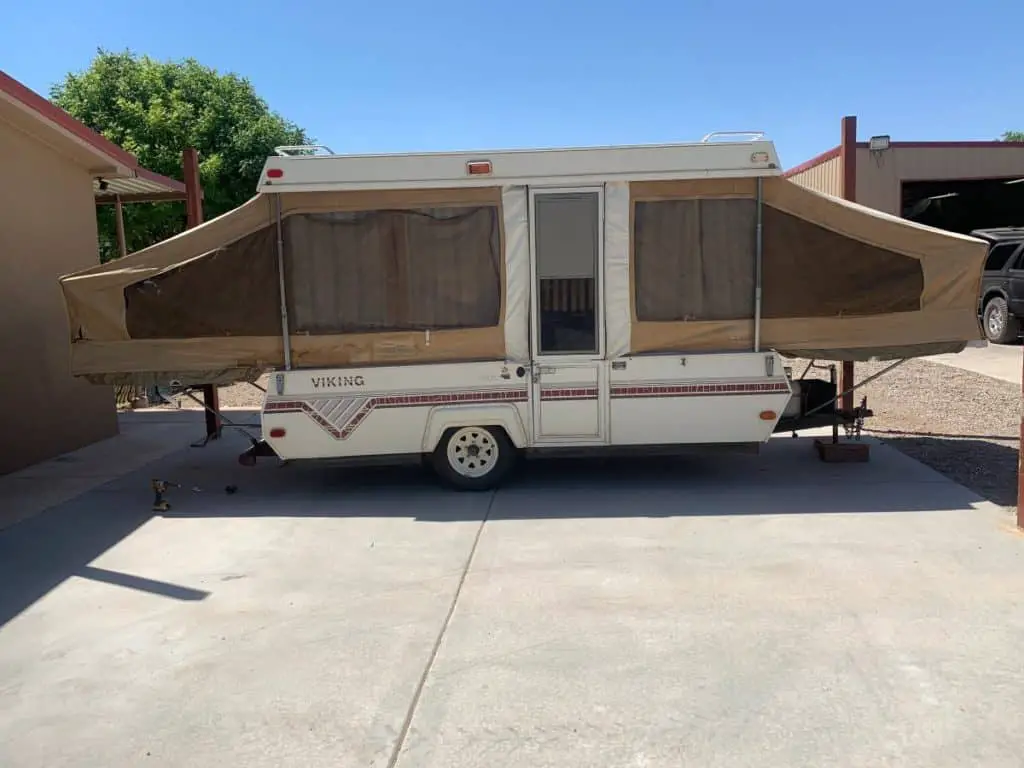
These were great because they were so light, and easy to pull behind a vehicle. The trailer has sides of canvas that is flexible, allowing the roof to be raised when in use, and then lowered for traveling. When traveling, the large beds on both ends slide in underneath the main roof. The roof then cranks down to rest atop the fiberglass or aluminum lower portion.
In the 2000s, a new type of trailer has become very common. It is sometimes known as a toy hauler, as it has a compartment to transport motorcycles, ATV’s, bicycles, or anything else that will fit.
These are generally larger and heavier and towed behind a pickup with some serious power and towing capacity. They make great units for the family that likes to haul their toys to the sand dunes for a great weekend.


The above picture is of a more modern type of travel trailer, similar in use to those of decades gone by. This type of trailer can usually be towed by an average SUV.
SYNONYMS OF TRAILER
As the years go by, many terms have been used to signify a trailer. We’re not referring to trailers towed behind a semi-truck, or other commercial types of units. We’re strictly referring to what we’ve been calling a travel trailer in this post.
- Camp Trailer – This term was often used in the earlier days for a tent trailer. It is generally used to refer to a smaller trailer that can easily be used on weekends for a family getaway.
- Camper – This term used to be used for a unit that would generally load onto the back of a pickup truck. Basically riding it piggyback. Not too many of those are seen anymore. However, the term is commonly used as a term for trailer.
- Caravan – Commonly used word in the United Kingdom and Australia; generally referring to a travel trailer.
- House Trailer – This is also an older term that is not commonly used today. It generally referred to older trailers that were larger in size that people often lived in within a trailer park. However, people also used this term to refer to a travel trailer.
- Motor Home – This term came into vogue in the 1960s as the industry started to build trailers that were drivable with their own cab and engine. Although this term is incorrectly used when referring to a travel trailer, it is still commonly used that way.
- Recreational Vehicle (RV) – This name came into common usage during the 1960s and 1970s. At the time, it was synonymously used with motor home. Although people still often refer to a motor home as an RV, the term is now commonly used to refer to almost any type of recreational trailer.
What Is A Mobile Home?
From my inquiries, asking a lot of older folks who were around back in the day, it seems that the term mobile home became widespread in the 1950s and still remains in common usage today to refer to a factory manufactured home that is installed on in a park, or on its own lot, and is a residential dwelling unit.
The term “trailer” was well entrenched in the minds of most people and the term was and still is often used to refer to one of these homes of any size or quality. However, the term “trailer” seemed to not adequately describe the larger homes that came to be, so the industry coined the term “mobile home” and that term took over as the term of choice.
Mobile home is a term that describes exactly what the early homes were. They were larger than a travel trailer, and were often found in trailer parks as a dwelling unit.

From the above picture, it is easy to see that this was large enough to be used as a home, yet small enough to be move around, yet small enough that it could be mobile, with not too much effort. These homes were generally about 8 feet wide and from 30 to 40 feet in length. Being only 8 feet wide generally limited the home to a few narrow rooms. Usually there was a bedroom in the back, a small bathroom next to the bedroom, then a kitchenette in the middle with a small living area at the front.

The above illustrates how these early homes were set up and used in a park as a home. As can be seen from the photo, they were very narrow which made them feel somewhat claustrophobic inside. Awnings and porches were often installed on the side to make them a bit more livable with some additional outdoor space.
The term “mobile home” stuck, just like the way almost any vehicle these days has morphed into some type of SUV! During the 1950s the sizes grew to about 10′ wide up to about 55′ long. With this size, some very small 2 bedrooms were available.
The 1960s saw widths move up to 12′ and 14′ feet wide. Length during this time grew up to 70 feet in legnth.
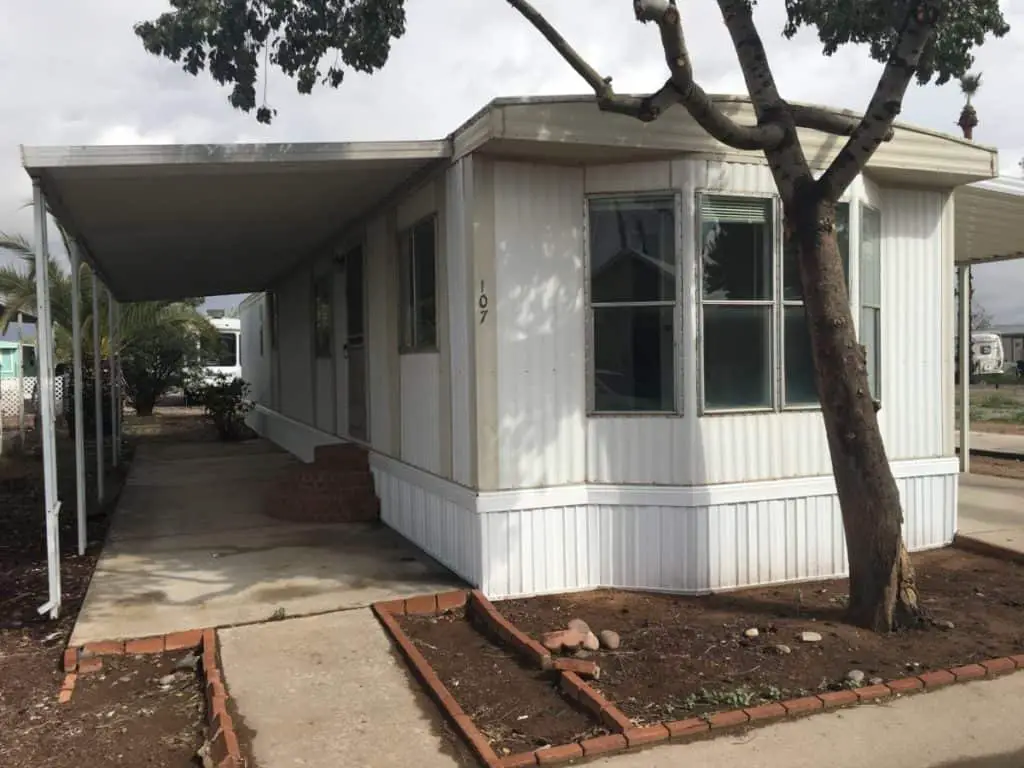
By the time mobile homes reached this size, you could no longer just hook them up to a truck and easily move them around. These homes required the acquisition of permits to move them on the streets and highways. By this time, most homes would be moved from the factory to a park or a lot. The home would then generally reside in that location for the duration of its useful life. Yet, the term “mobile home” was well used and entrenched in the mindset of most people.
What Is A Manufactured Home?
Starting in June of 1976, the department of Housing and Urban Development (HUD) introduced laws that required mobile homes to be built to a much higher standard than they had been previously. These laws changed how sturdy the chassis, framing, roofing, plumbing, and windows had to be to meet the standards.
All new homes had to be built to this new standard, and the industry introduced the new term “manufactured home” to distance the better-built HUD standard homes from the “mobile homes” from the pre-HUD era. The industry did its best to upgrade the homes in the minds of the consumer. However, to this day, many people still refer to almost all manufactured housing as “mobile homes”, much to the dismay of those who promote them for sale.
Starting in the 1980s, a lot changed with manufactured homes to make them look and feel more like a traditional home. For exmple:
- Siding – Wood siding was introduced and replaced the “trailer, mobile home” feeling aluminum siding from days gone by. The siding was very similar to that found on some stick-built traditional homes.
- Roof – The steel roofs found on many older homes gave way to pitched roofs with traditional asphalt shingle tiles. Many roofs also sprouted overhangs that made them feel more like a traditional home.
- Windows – Earlier mobile homes often had windows that looked like those of a travel trailer. Those windows had many exposed screws to where they were attached over the aluminum siding to the frame of the house. Now windows were being framed in, just like on a traditional home and were under the siding with trim around them on the outside.
- Chassis and Frame – The framing underneath that supports the home was generally beefed up with two strong I-beams running the length of the home. Across these beams, floor joists were placed perpendicular to which the subfloor of the home was attached.
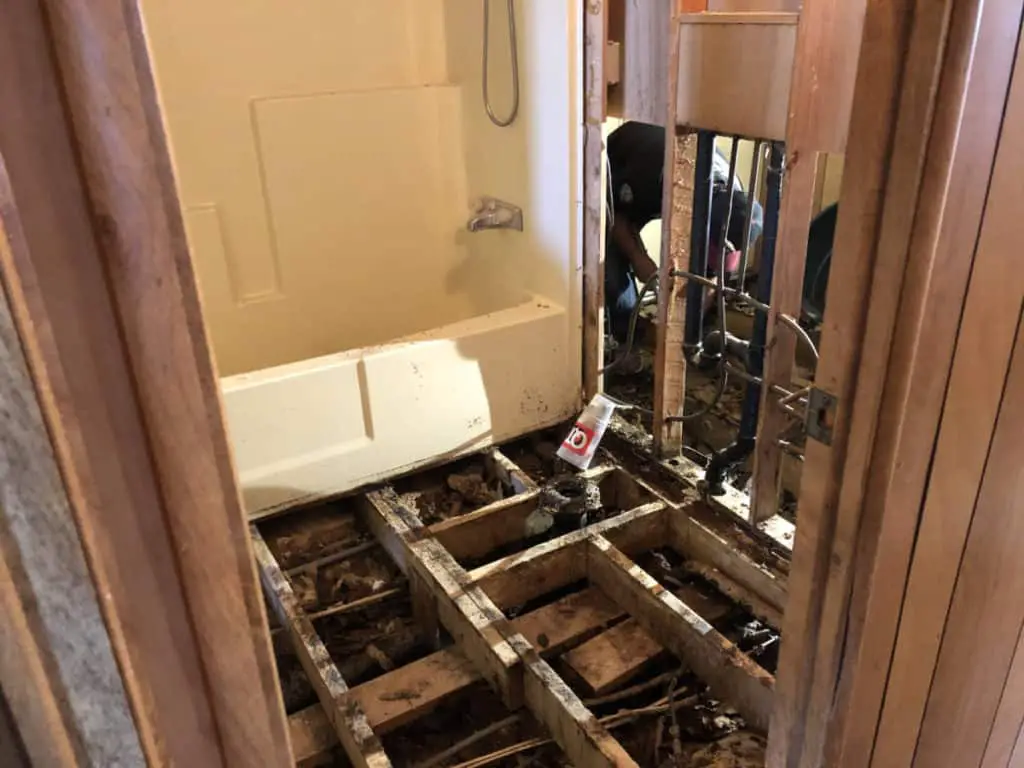
These changes from the older “mobile homes” made the newer manufactured homes feel and look more like a traditional home.

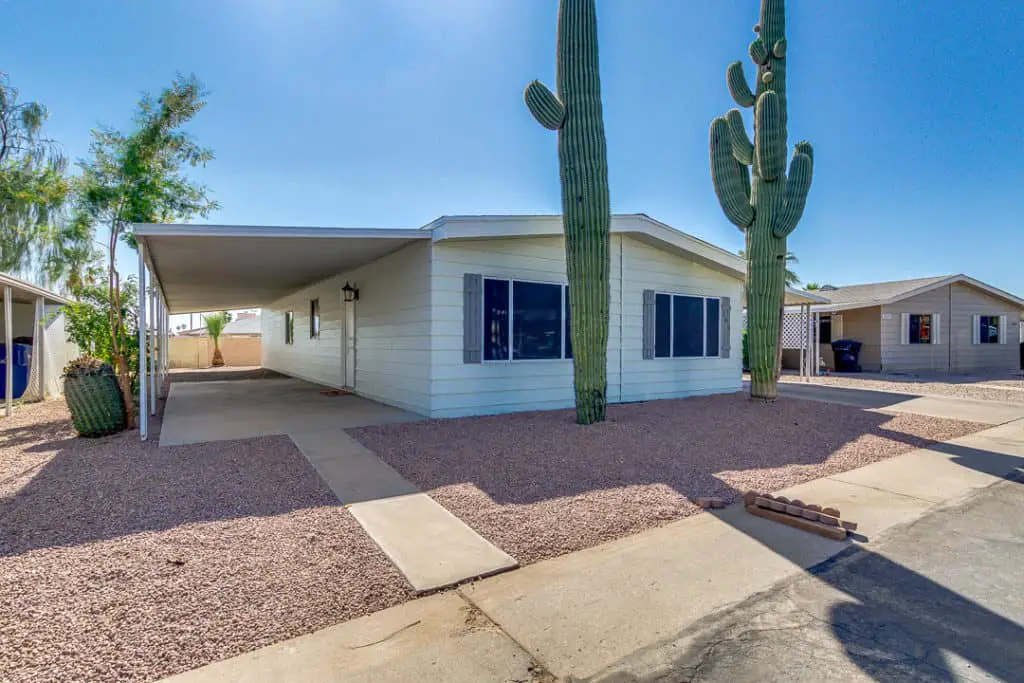
Since the 1980s, manufactured homes have continued to improve in both quality and look. Now, in the 2020s, these homes can be had with:
- Sections – They can be built as a single, double, triple, or even four sections in width.
- Framing – Many manufactured homes are built with 2″ x 6″ sturdy outer framed walls for high insulation values.
- Windows – You’ll find energy star low-e windows on many models.
- Ceilings – Vaulted ceilings came about in the 1980s, but those were usually 7′ foot outer stem walls running to a peak of 9′ feet in the middle. Now, you can get 8′ or even 9′ flat ceilings. This additional room height throughout the home really gives a feeling of spaciousness.
- Walls – Upper-end manufactured homes now have tape and textured drywall throughout the home. Although these have been available since the 1990s, they are far more prevalent today.
- Other Upgrades – Everything from higher-end cabinets, flooring, light, and plumbing fixtures are all available today directly from the factory.

Like most things in life, modern manufactured homes have traveled a long path of development and improvement since the early days. When a modern manufactured is made of multiple sections, ground-set, built with 9′ foot ceilings with attached garages, it is very hard to tell that you’re not in a traditional stick-built house.
What Is A Modular Home?
Modular homes and manufactured homes are often confused with each other. In fact, when doing research, quite a few manufactured home builders referred to their units as modular homes. While many modern manufactured homes can be of very high quality, and look very similar to a modular home, there is a distinct difference.
In looking at the definition of a manufactured home in Wikipedia, we find the following: ” The requirement to have a wheeled chassis permanently attached differentiates “manufactured housing” from other types of prefabricated homes, such as modular homes.”
The rolling chassis, found beneath a manufactured home makes the distinction. When delivered to the homesite, the rolling chassis remains with the home, and is the foundation of that home; regardless of how the home may sit on the site.
Modular homes are precision, traditional homes, built in a factory, that will sit upon a permanent foundation at the homesite. You might think of a modular home as a lego set. There can be many pieces, or sections to the modular home. They are assembled upon the foundation at the jobsite.
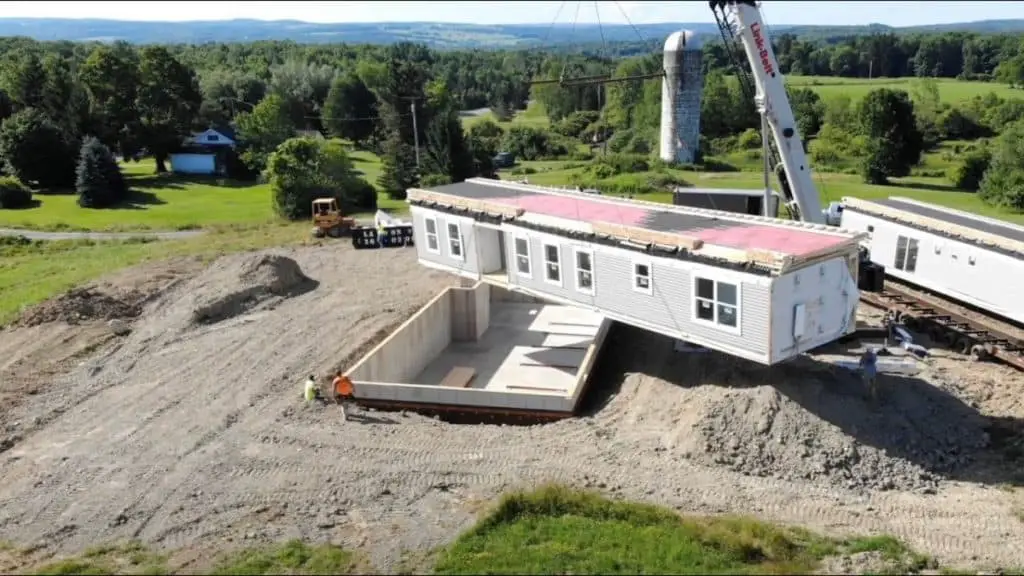
The architectural design of a manufactured home generally will have to be simple, because there are height requirements for the rolling unit down the highway. A modular home does not have these restrictions, and can be far more elaborate in design. The different sections can be configured, stacked, and put together just like a model made of Legos.
Another distinction, is that manufactured homes usually less expensive than traditional site-built homes. In comparison, most modular homes are often more expensive that traditional site-built homes. They are often very custom in nature.
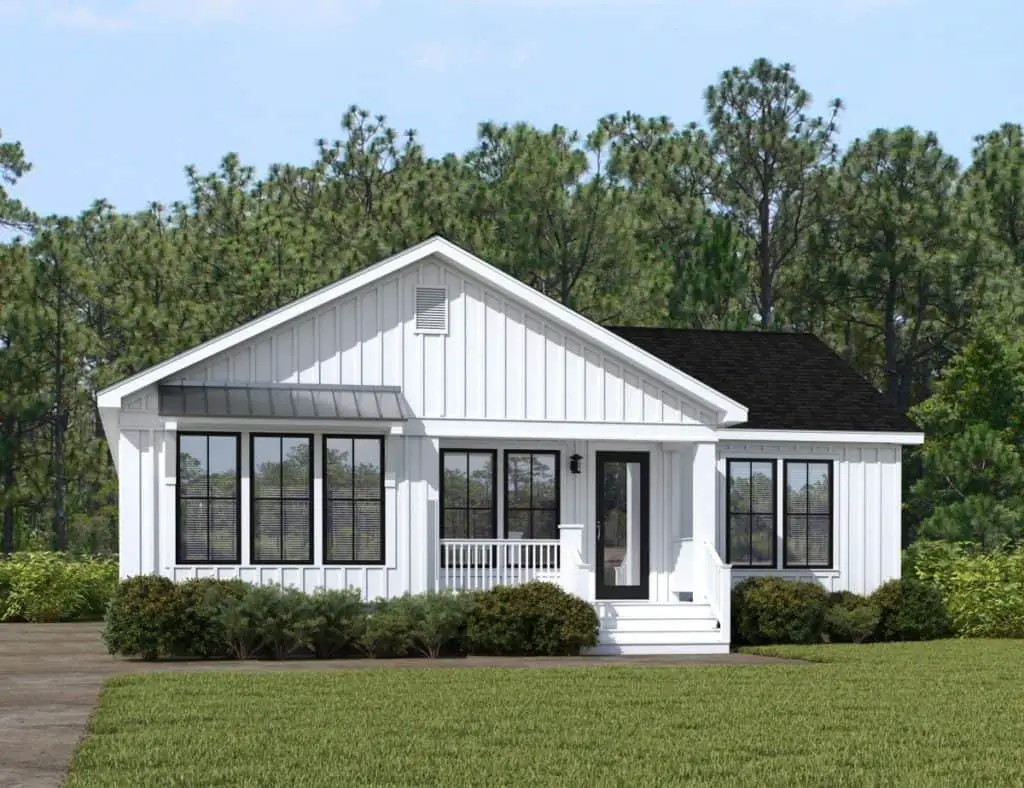
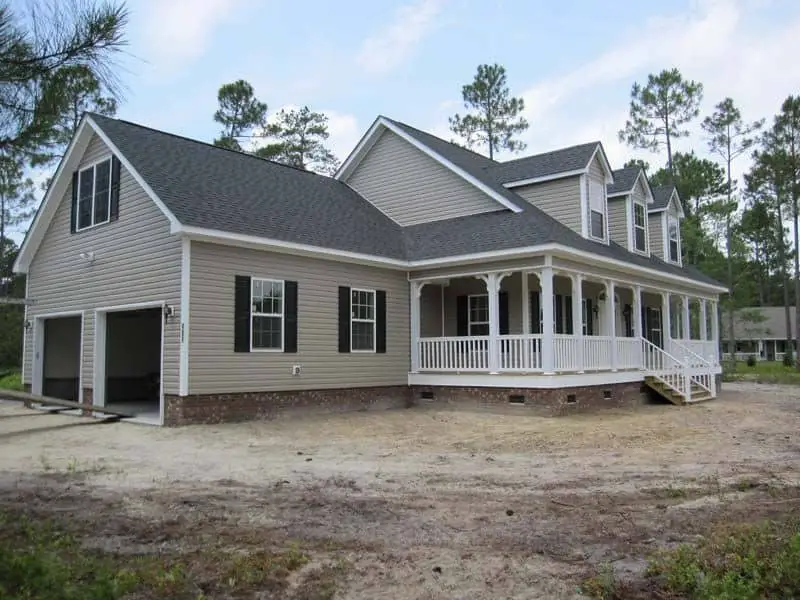
Conclusion
The term for manufactured housing has certainly morphed over the years. The simple trailers of long ago have grown in both quality and permanence over the decades. They also are far less mobile than they were 70 years ago.
As the units themselves have become larger, more permanent, and of a better quality, the name has changed over time as well. A trailer became a mobile home as it grew in size. The term mobile home gave way to the term manufactured home as the industry tried to differentiate the new quality laws that took place under HUD in 1976.
The term modular home began with the effort to make a better traditional site-built home, by building it inside of a factory with strict quality control.
The manufactured housing industry has tried to adopt the term “modular home” to apply their product; feeling that it will give their homes the impression of the highest quality. Manufactured and modular homes are not the same thing, no matter how badly the manufactured housing industry desires them to be.
We have found when working with our clients at Mobile Home Friend, that many people are especially confused when it comes to the distinctions between a manufactured home and a modular home.

